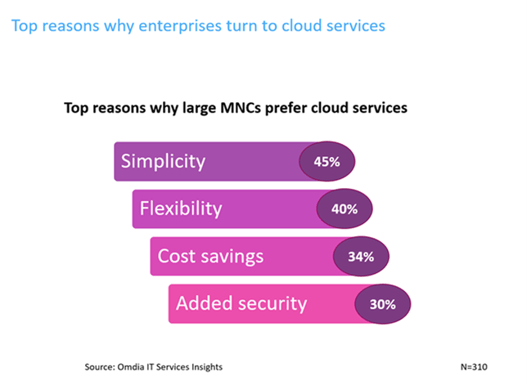No wonder, then, that the enterprise has moved much of its on-premise server infrastructure and applications to the cloud and continues to launch new projects directly in the cloud.

On-site, remote, and hybrid workforces also need access to data and applications in the cloud. Even if everyone agrees the cloud is the best option, there are questions and trade-offs over the best way to connect to them.
On one side is enterprise private wide area networks (WAN), usually MPLS VPN. These reliable and secure connections support strict guarantees on performance. But private WAN costs more and once set up, is hard to change. On the other side is dedicated and broadband public internet access. These connections are easy to set up and flexible to change. They bring more capacity at a lower cost. But the public internet is not completely dependable: Anything can happen. That means possible congestion and traffic issues, and maybe bad cloud experiences for the organization’s workers, business partners, and customers.
How does the network performance issue play out for businesses? Cloud/network performance problems are the second-biggest cloud headache for IT departments, second only to security breaches. Omdia’s research of large multinational corporations (MNCs) shows cloud/network performance was a serious problem for almost half (45%) of enterprises over their last 12 months. In total, 86% of large MNCs said they had some cloud/network performance issues.
If the network loses or delays traffic, the fallout of applications not working properly could mean small vexing glitches, or it could be serious damage to the business. The table below gives examples of corporate applications that most enterprises have shifted into public cloud and SaaS. There are possible consequences from network performance-related issues. Intermittent traffic glitches could be just a small, persistent annoyance. Chronic traffic problems risk stalling applications that are critical to the business’s operations.
 Source: Omdia Global Enterprise IT Services Insights survey; vendor and company reports.
Source: Omdia Global Enterprise IT Services Insights survey; vendor and company reports.
Network performance issues are bad for conventional enterprise applications. When it comes to next-generation emerging, cloud-hosted native digital applications, network performance problems can derail operations completely.
Two examples are real-time monitoring and control systems, and real-time cognitive processing. When it comes to real-time monitoring and control, 28% of large enterprise MNCs already use components hosted in the cloud. A lag or dropped traffic on a key temperature sensor, a missed flaw in item assembly, a pressure control instruction at the wrong time: All these things can ruin output or damage equipment.
Even a topic that sounds dry, such as digital asset management and records tracking, is a big problem if a network issue lets a transaction fail. A missing digital manifest for a truck shipment or a disappeared hotel reservation means some customer frustration, but the problem can be fixed. A lost digital record in e-commerce might mean a bad shopping experience and a lost customer. But if a failed cloud transaction loses a healthcare patient record, or if the current location of a key piece of hospital medical equipment is unknown, that can have very serious consequences.
How to balance an internet built to be best effort against applications hosted in the cloud that need top performance? Internet access is low cost and flexible; private WAN is not. For remote workers, broadband internet is often the only choice. The obvious answer is to improve the internet, by optimizing it for performance. A performance-optimized internet is an overlay to the conventional internet. It constantly monitors and tracks global traffic conditions, sending enterprise traffic on optimal routes. A global system of monitoring and management nodes, in major cloud and network interconnection points, finds the best options for IP traffic.
Performance-optimized internet such as Expereo’s Enhanced Internet technology adapts in real-time, finding ways around traffic congestion. It connects remote workers and corporate sites to distant cloud resources in the fastest, most efficient way. As conventional internet routes hit congestion and drop traffic, Enhanced Internet overrides default routing instructions and finds better performing, lower-capacity alternatives. It adapts, moment by moment, to find the best speed, reliability, and capacity, to deliver traffic in time and intact.
SD-WAN and internet optimization complement each other. Each does something different. SD-WAN works on applications traffic and selects access paths, which helps local performance. An internet backbone optimized for performance helps to find the best traffic routes for the regional and global level.
Enterprises need consistent performance to and from the cloud. Enterprises also find that the best-effort public internet, for all its advantages, is not consistent. Every device on the internet that sits between a worker and hosted applications in the cloud adds a little time lag and adds to chances that something might happen to traffic. Internet that is optimized for performance actively monitors and avoids potential trouble spots.
The right kind of services partner will have options to optimize the internet, deliver predictability where non existed before, and ensure better user experiences to the cloud. Altogether better experiences make for happier workers, more satisfied partners and customers, and better productivity for the business.
Omdia is a leading research and advisory group focused on the technology industry. With clients operating in over 120 countries, Omdia provides market-critical data, analysis, advice and custom consulting.
More articles by Omdia

